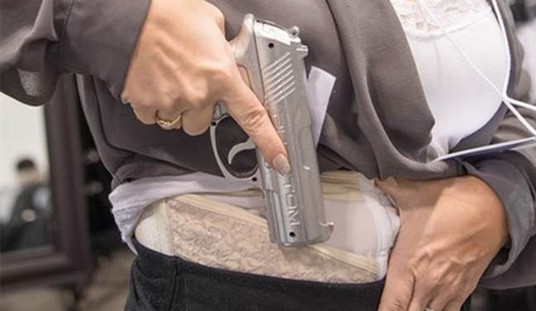
Cork Graham, the “Lucky Kid,” leaning against his ride being refueled at San Miguel a few weeks after the base overrun.Graham was a paramilitary in Central America in the 1980s.
Surprise attacks aren’t called that for nothing. In the middle of the night on June 19, 1986, my eyes were opened by the sound of an RPG blast. Then, there was the deep rattle of rapid fire from a Galil that told me something wasn’t right. But, it was the first shots from an FN-FAL, that hard to forget “Pa-CHOM!” from the enemy’s sniper’s weapon of choice, within the base, that jumped me out of bed into a midnight threatening to cut short my life.
“Da me un arma!” I said, to the young Salvadoran Army captain, who had also been startled from his bunk. Responding to my request, he yanked a Y-harness festooned with full ammo pouches and grenades, and an M-16 for me. I cursed myself for having gotten into a rapport-building drinking match him and his fellow officers earlier that evening, and especially cursed the fact that I wasn’t even supposed to be at the Salvadoran Army’s Third Brigade base in San Miguel. I was on my way back from quick administrative duties in San Salvador to continue a course in CoTer and CoIn taught by US Navy SEALs from MILGROUP at the Salvadoran Naval Special Forces base in Punta Ruca.
As the captain had to get to his troops, I joined him. I would have preferred to join the MILGROUP members teaching at the base, but it was my error in not saying hello in person, because I had arrived late the previous evening on a UH-1 that had quickly returned to Ilopango, and so didn’t want to wake them. The US advisors had already booked out of there in their skivvies, through a secret escape tunnel, just ahead of a guerrilla team specifically sent to kill them.
Sticking with the captain, I headed for the wall a few of his men were defending. That’s when we learned that the Farabundo National Liberation Front, El Salvador’s Communist-backed insurgents, had successfully breached the inner base wall. Worst, a dozen of the FMLN’s special forces had earlier infiltrated in shorts and t-shirts, looking like army recruits, and were fighting with weapons they had taken from soldiers they killed. Soldiers were shooting each other. It was total pandemonium, with silhouettes of armed men against the fires of two barracks in which a number of trapped soldiers were burning to death.
While we were doing our best to stay alive, out at the heliport, the Gs shot pilots as they tried to get to their helicopters and take off. Then, the Gs destroyed the aircraft with explosives the Sandinistas had smuggled in from Nicaragua over the previous months, on the Pan-American Highway, in secret compartments of benign-looking freight trucks. So much for immediate air support.
It was turning out to be one helluva grand evening in the tropics, and we sure weren’t at a loss for targets. Every time one dropped, another seemed to miraculously take its place.
“Necesitamos más munición,” I yelled to be heard over the deafening noise, and one of the men ran off for more ammo.
We were doing pretty well, especially considering how the base had turned into a mad house with people running here and there, and trying to pick out Gs from friendlies—and that’s all I remember from that night. Perhaps in my imagination, I recall a flash, but then it was just lights out. I came to full consciousness the next day in a hospital bed, with the most splitting headache. That’s when I was briefed on what had happened: an RPG had killed the captain, along with one of the other soldiers; the other soldier had lost his arm to the blast. Aside from tiny pieces of shrapnel in my arms and legs, and near-crippling migraines, like a hot poker driven from temple to temple, plaguing me for the next ten years, I really lucked out.
A few weeks later, I was in a chopper above the base at San Miguel, and hit by the impact of what had happened the night of the base overrun. Below, they were still clearing out the debris. The choppers destroyed during the attack were gone. The corner of the building we defended was still a pile of rubble. And the naval base I was quartered at that summer was also on high alert for a potential attack, with FMLN radio communications in the neighborhood just outside the perimeter.

The pile of rubble that was the corner Cork Graham helped defend.
Years later, on a History Channel documentary, a former Green Beret commented on his frustration at how much of a full-on war had been fought between the Communists and the free world–Britain, Argentina, and Israel’s assistance was very present, much needed, and very appreciated by those of us there–in Central America, during the last great battle of the Cold War, and yet how little of that fight against a Moscow, Hanoi, Havana and Managua-directed front, much less the winning of that war, was ever publicly recognized. When I returned to university in the early 1990s, I had a classmate who had been with the 82nd Airborne and assigned as an radio transmission operator to a U.S. Army Special Forces unit during the Salvadoran “Tet Offensive,” in November 1989. He said that there was talk of a campaign medal for those Americans who had fought in Central America during the vicious 11-year war. But that’s all I ever heard.








Join the conversation as a VIP Member